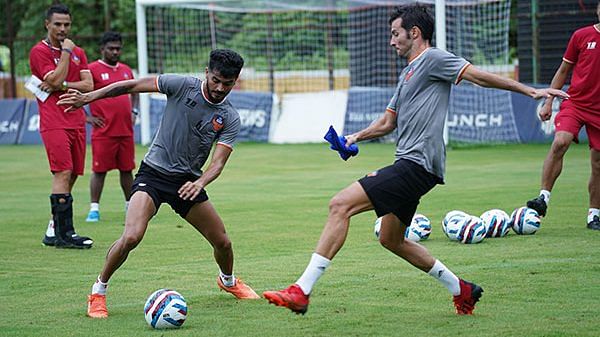Thank you dear subscribers, we are overwhelmed with your response.
Your Turn is a unique section from ThePrint featuring points of view from its subscribers. If you are a subscriber, have a point of view, please send it to us. If not, do subscribe here: https://theprint.in/subscribe/
Amidst an environment of high voltage political campaigning on one side and that exhilarating T20 league on the other, both taking up mental and actual bandwidth of most of the country’s citizens, the recent Eid festival provided a small window for the other biggest passion of the country, i.e., Cinema, to exhibit their wares in the form of big budgeted superstar led films. The cinematic merits of this year’s Eid films aside, the subject matter of one of the big releases – Maidaan, directed by Amit Sharma (starring Ajay Devgn, among others) is incredibly fascinating.
Maidaan tells the story of what is now called ‘The Golden Age of Indian Football’ between 1951 to 1962, when the Indian National Football team, mostly coached and managed by S.A. Rahim achieved astounding results, especially for a fledgling country such as ours. During these exceptional years, the Indian team won Gold at the Asian Games in 1951 & 1962 and competed in the Summer Olympics in 1952, 1956 & 1960, with the distinction of placing 4th in Melbourne 1956. Incidentally, as mentioned in the film as well, 1960 was the last time that Indian football team competed in the Olympics.
During this era, several true-blue legends of Indian sport rose up to serve the beautiful game with distinction. Players like PK Banerjee, Chuni Goswami, Tulsidas Balram, Sailen Manna, Jarnail Singh, Peter Thangaraj, Neville D’Souza, S.A. Rahim’s son Syed Shahid Hakim, among others were Independent India’s earliest sporting superstars. Over the years, this generation not only earned various accolades from different institutions, but also attained a near mythical status among the country’s football faithful.
Unfortunately, the rapid ascent of Indian football was followed by a steep decline over the next decades, to the extent that the team which was labelled ‘The Brazil of Asia’ was ranked 173 as early as 2015.
However, in the last decade, due to efforts of AIFF, emergence of ISL, refinement of iLeague, investment at the grassroots and impressive performances of the Blue Tigers led by Sunil Chhetri & co, India managed to break into the top 100 rankings multiple times, notching memorable wins. The path may be long and arduous, but one can hope that this and the subsequent generation of players will restore Indian football back to glory.
Courts
While on the subject of glorious history followed by unfortunate declines, we have to consider another sport where a similar pattern may’ve been emerging, until a recent resurgence led by one veteran player. That sport is Lawn Tennis and the player is Rohan Bopanna.
In contrast to the everyman’s game of Football lies the elite sport of Tennis in India. Long considered inaccessible, Tennis was brought to the mainstream of public consciousness through the exploits of the Amritrajs and the Krishnans, taken to further heights through the likes of Paes and Bhupathi, reaching a crescendo with the advent of Sania Mirza. This rise naturally brought in more money and better infrastructure, leading to a new generation of talent emerging across the country.
India, whose successes in Tennis until the end of 1980s were mainly in the Davis Cup, exceeded all expectations with a surprise Bronze at the 1996 Atlanta Olympics (Leander Paes). From then to the mid 2010s, Indian athletes were part of multiple Grand Slam wins across various doubles disciplines, several Junior Grand Slam titles, with many players breaking into the Singles Top 100, with several Doubles World No. 1s and regularly hosting ATP and WTA Tour events, among other triumphs.
From such highs, the situation of Tennis in the last few years is concerning. There are administrative issues, funding and sponsorship issues aplenty – the troubles of top 100 ranker Sumit Nagal are well documented. The major stars have all either retired or are aging, the only ATP Tour event in the country has been shifted to Hong Kong, and there are no WTA Tour events scheduled in India presently. At the Tokyo Olympics, India was able to send a contingent of only 3 players, 2 of which were only possible because of Sania Mirza’s protected ranking. There were similar struggles in Davis Cup ties in this period too.
Amidst trying times for Indian Tennis, Bopanna becoming the oldest ever Doubles World No. 1, his victory in the 2024 AO and Nagal’s dogged commitment to stay in the Top 100 give a glimmer of hope that Tennis won’t suffer a freefall in India, yet. In an Olympics year, let’s hope that the positivity at the beginning of 2024 gives rise to more good news & make the powers that be grow Indian tennis to greater heights.
Or else, there may come a time when someone in the future decides to make a film about these last couple of decades as the ‘Golden Age of Indian Tennis’.
These pieces are being published as they have been received – they have not been edited/fact-checked by ThePrint


